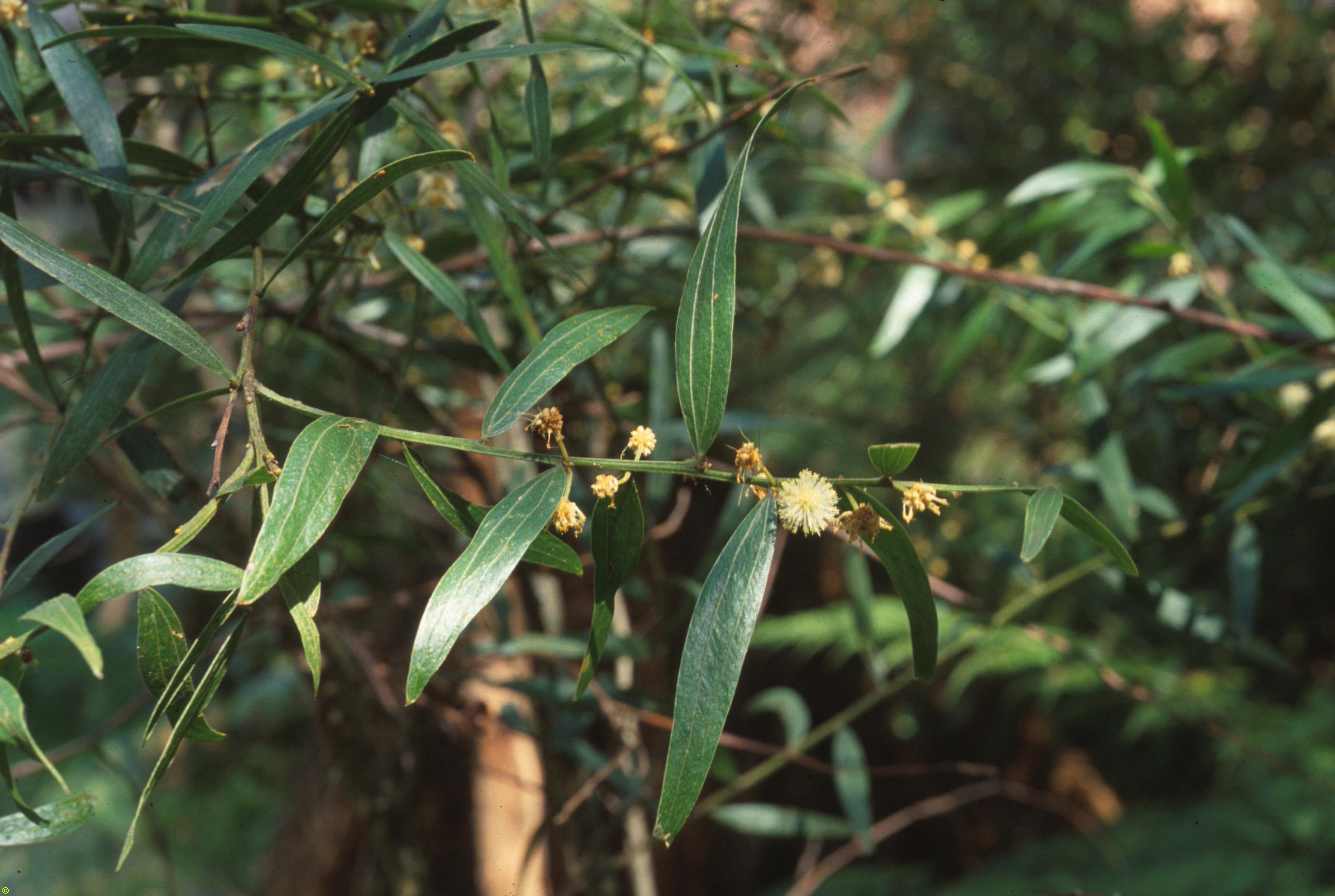Scientific Name: Acacia leprosa var. graveolens
Common Name: varnish wattle
Family Classification (Clade): Eudicots
Family: Fabaceae
Form Description: Shrub, usually straggly.
Height (m): 3 – 5
Flowers: Tiny flowers which appear to be dense fluffy balls occurring singly on a flowering stem.
Fruit: Seed pod – brown, straight, sticky, flattened, constricted between the seeds.
Municipality
Plant Communities
Habitat Notes
Widespread and abundant in damp shady places. Occasional in lower, drier habitats.
Site Tolerance
Dry, Moist, Rocky, Shady
Soil Tolerance
Clay, Fertile, Loam, Nutrient-poor, Sandy, Well-drained
Frost Tolerance
Hardy
General Notes
Useful in providing low level shelter (up to 4m) in mixed species windbreaks. Useful in soil erosion control as fibrous roots help bind the soil. Also useful in improving soil fertility. Will regenerate naturally from seed particularly following fire. Resistant to Phytophthora cinnamomi. Susceptible to browsing by hares and rabbits. Koori (mainland) use: reputedly used to stupefy fish to enable easy capture.
Propagation Calendar
-
Flowering Month
Jan Feb Mar Apr May Jun Jul Aug Sep Oct Nov Dec -
Seed Collecting Month
Jan Feb Mar Apr May Jun Jul Aug Sep Oct Nov Dec -
Sowing Month
Jan Feb Mar Apr May Jun Jul Aug Sep Oct Nov Dec -
Cutting Month
Jan Feb Mar Apr May Jun Jul Aug Sep Oct Nov Dec
Propagation Method
Seed Information
Seed Collection
Most acacias are readily propagated by seed. Releases seed immediately on maturity. Pick pods just as they start to dry and change colour. Spread on sheets. Sieve to isolate.
Seed Storage Life
Long
Seed Treatment Notes
Propagation from scarified seed. Pour boiling water over seed and allow to soak for 24 hours before sowing. Alternatively boil the seed for 30 secs before plunging into cold water and sowing.
Germination Time
2-3 weeks
Cutting & Division Information
Too hard and strike rate too low to bother. Cuttings are possible with “phyllode bearing” acacias, more so than with “feathery leaved” species.
